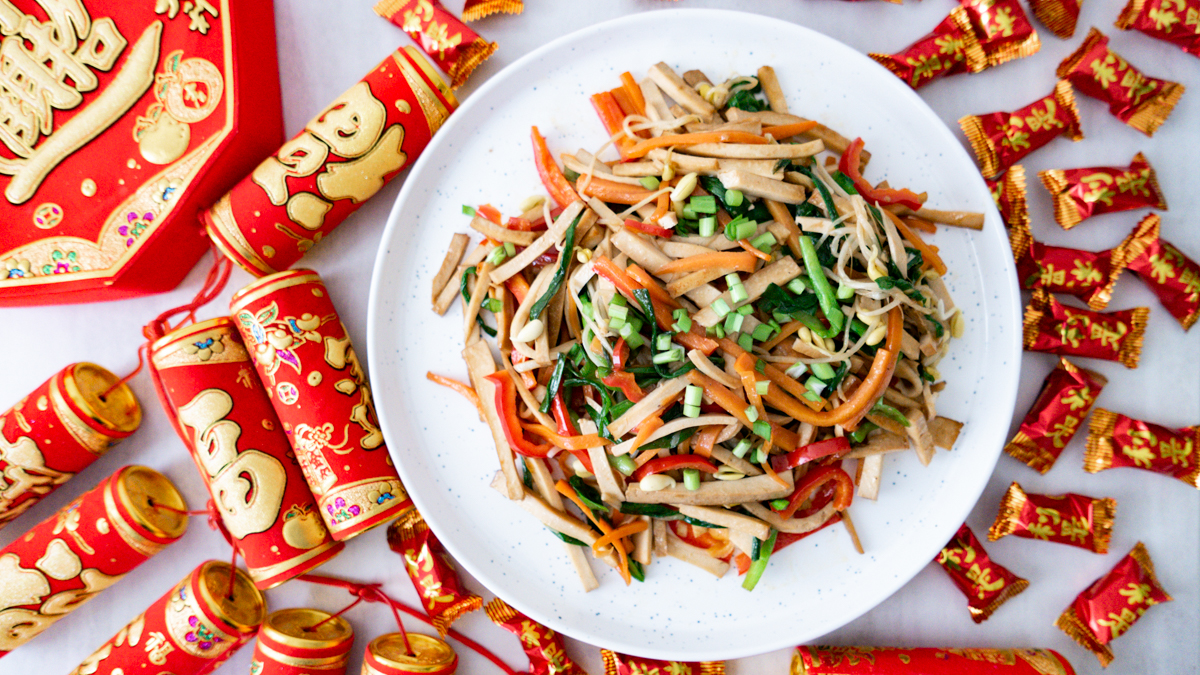In honour of Chinese New Year, we have Nancy from Nomss on the blog today to share Chinese New Year traditions along with a roundup of her favourite recipes to celebrate the special occasion.
Throughout my food journey, I have been so honoured to learn about the cultures and significance behind the many dishes that have grown to love over the years. Food is at the centre of our cultures and families, and so much beauty in the act of sharing food with our loved ones.
There is much for me to learn, and with Chinese New Year right around the corner, what a perfect time to deepen our knowledge! The date changes every year, and each New Year starts with a new animal’s zodiac based on the Chinese lunar calendar: this year is the year of the Tiger.
It is my pleasure to welcome Nancy, a mom and Vancouver blogger from Nomss.com, to the blog to share more about Chinese New Year: take it away Nancy!

Hi, it’s Nancy here! Chinese New Year, sometimes called Spring Festival or Lunar New Year, officially arrives this year on February 1st. Some may say that Winter Solstice is more important, but who can argue about a sixteen-day long celebration with plenty of delicious sweet treats, savoury snacks and an elaborate family-focused dinner menu?
Indeed, the preparations start almost a month before Chinese New Year’s Eve, with many traditional customs (some modernized for today’s busy bodies). Already you can see decorations and hear the buzz of where and what to eat for Chinese New Year!
Why do people celebrate Chinese New Year?
What happens during this sixteen-day celebration? Lunar New Year is all about removing the bad and old and welcoming the good and new, rooted in worshipping Gods and Ancestors for good harvest upon the arrival of spring in ancient China.
Chinese New Year Food Traditions
Family Reunion Dinner on New Year’s Eve
When it comes to Chinese New Year dishes, there is no shortage of auspicious fanciful names that bring positive energy, good fortune, harmony and good health! Take this easy to make Steamed Money Bag Dumplings, for example. Who doesn’t like to ring in the Lunar New Year with heaps of good fortune?!
On Chinese New Year’s Eve we celebrate the family reunion with abundant good food. A traditional Chinese New Year’s Eve menu includes whole fish, whole chicken, sumptuous seafood and elaborate appetizers. Nose to tail proteins signify unity, completeness and good fortune all year round.


Lunar New Year Menu for Four
Host your intimate family reunion with the following dishes that will wow your guests!
- Hokkigai Arctic Surf Clams Cold Appetizer
- Steamed Money Bag Dumplings
- 5 Color Radiance and Abundance Tofu Stir Fry
- Sichuan Mala Mouth Water Chicken
- Instant Pot Braised Chinese Mushrooms
- Red Bean Dessert Soup
- Osmanthus Flower Jelly with Goji Berry
Other Chinese New Year Traditions
Exchanging Red Envelopes
Money is king! Red envelopes (lìshì or lai see in Cantonese) are given to children or those not married by their elders. Red packets symbolize good fortune but are traditionally used to ward off demons. The amount of money is always in even digits, never odd digits, except for the number 4 as it rhymes with the word “death.”
Cleaning
Preceding Chinese New Year, I often remember my parents and grandparents busy cleaning the house. Indeed cleaning before the New Year is a tradition in Chinese culture. Tidying up the place to remove the “old” in anticipation of welcoming “new” luck and the New Year!
Purchasing
After cleaning, Chinese people like to shop for new clothes, and these new items are worn on the first day of Chinese New Year. It is auspicious to wear anything red or gold! The colour red symbolizes prosperity, luck and happiness.
How will you be celebrating the Year of the Tiger?!
About Nancy & Nomss







Very interesting, Thanks for the informative blog post onLunar New Year! 🐯